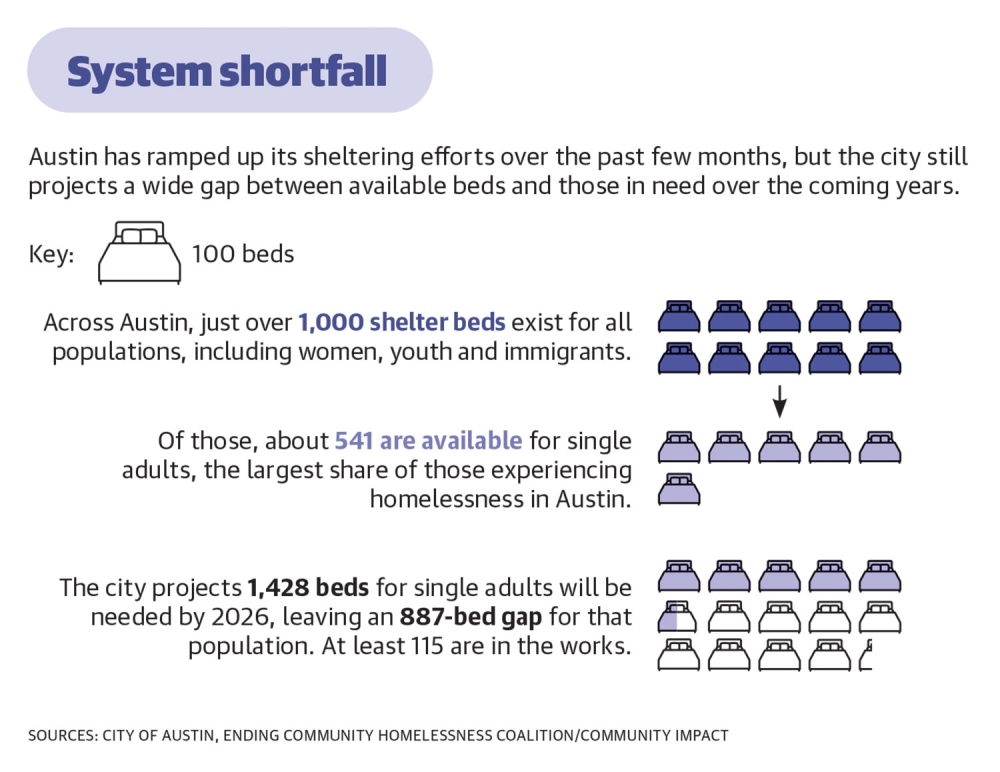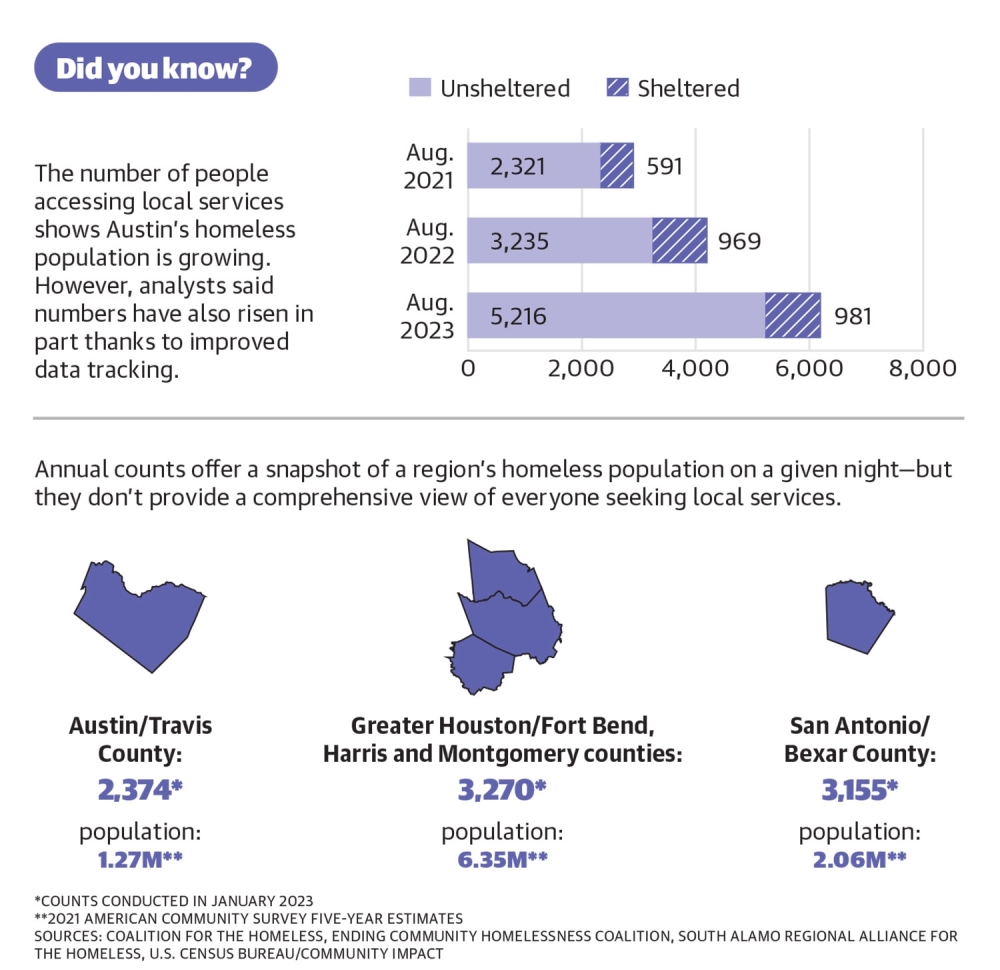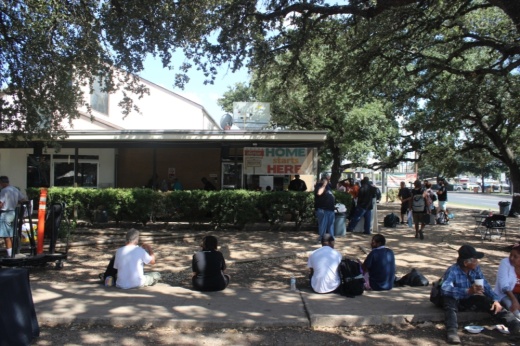Local leaders are anticipating hard decisions as federal pandemic-related funds for homelessness services are expected to drop off next year.
The federal funds add to tens of millions of city dollars used to serve those experiencing homelessness, which the Ending Community Homelessness Coalition estimates is 6,200 people.
•Less than a year into his term, Mayor Kirk Watson said he stands behind the city’s plan to fund both new temporary shelter and permanent housing investments, but more scrutiny and changes may be coming.
“If I didn’t think the money that we were putting into it was the right amount of money, I wouldn’t have been in favor of doing it,” Watson said. “But I want to make sure that it’s being done the right way, and I think that it would be appropriate for us to take a step back and review.”The city’s current budget prioritizes temporary shelters after several years of focusing on supportive housing.
Between local and one-off federal funds, Austin will spend about $80 million addressing homelessness this year, up from $73 million the prior year. The money will fund smaller-scale mental health and client support programs as well as higher-cost temporary shelters and permanent supportive housing.
Permanent supportive housing offers employment, behavioral health and other services; an expensive and long process. Temporary shelters, such as the Marshalling Yard, a city warehouse, welcomed hundreds of clients soon after council authorized its $9 million conversion into a shelter this summer, focused on providing an immediate place for people to go.
What’s happening?
The budget priorities drew a mixed response from some community members and advocates who challenged officials’ choice to direct one-time funding away from supportive housing.
“[Supportive housing] won’t just house one person for each unit,” said Matt Mollica, executive director of ECHO. “We’re talking about units that will be here to serve the community for decades to come, and that’s exciting and new and important.”
Local efforts for supportive housing are continuing amid a renewed focus on temporary shelters, with initiatives such as Finding Home ATX, the public-private initiative started in 2021 to house thousands of Austinites through 2024.
Watson said an immediate demand in the community showed the shift was needed.
“That’s the market speaking,” Watson said. “People wanted a place to go.”

In this past fiscal year, operations across five city-supported shelters cost more than $26 million. Austin officials estimate it cost more than $34,000 per person per year to maintain fewer than 800 beds, including supportive services, meals and housekeeping.
Additionally, one city program has moved more than 600 people from encampments into shelters since 2021 at a cost of about $25,000 per person. Nearly $5 million is set aside for general encampment cleanups over the coming year.
Beyond those efforts, many homelessness services are scattered throughout the city and remain difficult for clients to navigate. Mark Hilbelink, executive director of South Austin’s Sunrise Homeless Navigation Center, said the city prioritizing shelter or housing outcomes alone, while important, means other community needs aren’t met.
He said more resources are needed on the “front end” of homelessness work, such as day centers offering walk-up services, which could also produce better data on Austin’s homeless population and its needs.
Emergency shelters in Austin served a total of 2,601 people in fiscal year 2020-21 and more than 2,900 people in FY 2021-22, but data for the most recent fiscal year is still being collected.
Between 173 and 238 people have moved into permanent supportive housing each year since 2017, according to ECHO and the city, which keeps tabs on housing and shelter statistics.
The breakdown
In the next year, the city will spend $17 million of its dedicated funds to combat homelessness for the development of supportive housing and related services. Additionally, $9 million will be used for shorter-term housing or vouchers for tenants.
Stakeholders agreed homelessness solutions aren’t cheap or simple. Still, the high and increasing cost of services draws some criticism, including recent calls from community members and officials for a closer look at spending.
“I think we ought to be doing [spending reviews] on a routine basis on anything that has this kind of expenditure, this kind of exposure and this kind of passion behind it just to make sure we’re doing it right,” Watson said.
A focus exclusively on the price of homelessness services also illustrates the challenge of balancing needs that often outpace the available resources.
As millions of dollars are spent addressing public encampments, those involved said many clearings are followed by the unhoused individuals returning to a nearby area without anywhere else to go.

Jose Cruz, who’s been homeless for about six years, said he’s given up on finding a housing solution through city systems after years of trying; he’s now hoping to find help from community members. Cruz said he doesn’t believe what he views as a backed-up housing process can work without more support for clients along the way as he’s seen many people be housed and then return to the streets.
“They don’t have an actual plan that will ensure that the homeless people are not going to leave the apartment as they’ve been doing,” he said.
What’s next
Many said the goal of adding supportive housing can free up shelter beds as clients transition from temporary to permanent spaces.
The first of more than a dozen new supportive housing facilities includes a few city-owned hotels that are being revamped for new tenants and could begin opening late this year or in early 2024. Many of the projects will be brand-new construction, and altogether, the additions will expand Austin’s supportive housing network by more than six times.
Mollica said a key area of improvement can be the use of tenant-based tools, such as vouchers, to address the housing shortfall in private apartments as well. However, hundreds of people who’ve already secured their vouchers are still struggling to get housed.
"That part of the strategy needs to be fine-tuned and reworked and needs to be better, quite frankly,” he said. “We have some areas of improvement; there’s no doubt about it.”





